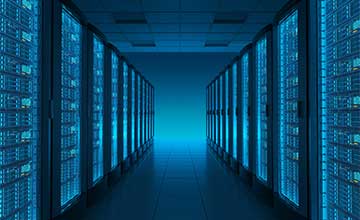We’re currently living through the Fourth Industrial Revolution – sometimes referred to as Industry 4.0 – which builds on the advances made in the Third Industrial Revolution. Industry 3.0 saw advances in automation and computerisation, building on the innovation of the assembly line see in Industry 2.0, which in turn built on the mechanics of the steam engine. Each of these eras did more than just improve things – they totally revolutionised the manufacture of goods and the nature of work itself.
Industry 4.0 is driven by new tech like the Industrial Internet of Things (IIoT) as well as cyber-physical systems. These include smart systems which ‘think’ for themselves using algorithms and which control and monitor physical beings like robots, machines and vehicles. Supply chains are made ‘smart’ by industry 4.0, whether they be for manufacturing, storage or logistics. But this Fourth Industrial Revolution affects more than just supply chains; it can integrate into back-end systems such as Enterprise Resource Planning (ERP), giving organisations new levels of control and visibility. It’s true to say that Industry 4.0 is an important and influential part of any organisation’s digital transformation.
Industry 4.0 technologies
There are nine pillars of technology which make up Industry 4.0. It is these advancements which connect the physical and digital worlds, enabling the smart automations and systems we see today. The full potential of the Fourth Industrial Revolution is only seen when these technologies are used together, though businesses and supply chains are already utilising some of them on their own. The nine pillars are:
- Industrial Internet of Things (IIoT): this is such a crucial part of the Fourth Industrial Revolution that the term IIoT is sometimes used interchangeably with Industry 4.0. The majority of physical entities in Industry 4.0 such as robots, equipment, products and devices, have sensors and radio-frequency ID tags (RFID) to provide data about their performance or location in real-time. This allows companies to quickly design and modify products, reduce downtime, streamline their supply chains, satisfy customer preferences, track inventory and many other useful things.
- Big Data and Artificial Intelligence (AI): Equipment and devices connected to the Internet of Things (IoT), or REP and CRM systems, all generate a huge volume of data known as Big Data, which is then collected together in Industry 4.0. Then insights are created by machine learning and Artificial Intelligence in real time, to allow decision-making and automation across the whole supply chain system – from planning, procurement, engineering, R&D, manufacturing, logistics and EAM (Enterprise Asset Management).
- Augmented reality (AR): In Industry 4.0, the ability to overlay digital content on a real environment is an important technology, which is provided by augmented reality. AR is still developing but has the ability to impact massively on things like maintenance, quality assurance, service and technician training, as well as health and safety. Employees can wear so-called ‘smart’ glasses or use mobile devices to look at things in the real world (usually equipment or products) and instantly visualise digitised parts, repair instructions, training content, and real-time IoT data.
- Horizontal and vertical integration: this is really the foundation of Industry 4.0. Horizontal integration refers to tightly integrated technologies at ‘field level’ (on the production floor, across multiple sites, and the whole supply chain). Vertical integration means that an organisation’s ‘layers’ are tied together – so that data can move freely between the shop floor and the top floor, and vice versa. This means that production is tightly integrated with important business processes such as quality assurance, marketing, and R&D – and it prevents knowledge silos from forming.
- Cloud computing: The data that underpins Industry 4.0 technologies is based in the cloud and is used by cyber-physical systems for coordination and communication purposes. Cloud computing has been called the ‘great enabler’ of Industry 4.0 and digital transformation, though today’s tech goes far further than improving speed, storage, cost and scalability. It is the thing that helps businesses to innovate, and is the foundation of machine learning and AI technologies, as well as the IoT.
- Autonomous robots: Robots that recognise, analyse and act on information from their environments are now able to carry out complex tasks, using the latest software, AI and machine leaning. This new generation of robots has emerged in Industry 4.0, and need little human intervention. They come in a variety of sizes and may be used to do anything from picking and placing operations, to inventory scanning.
- Additive manufacturing / 3D printing: Initially used as a quick prototyping tool but now used more broadly, additive manufacturing is a crucial technology underpinning Industry 4.0. It may be used for anything from distributed manufacturing to customisation on a mass scale. It allows parts and products to be stored as design files in virtual inventories and printed at the point of need. This on-demand element allows reductions in both transport distances and associated costs.
- Cyber security: Industry 4.0, with its increased levels of connectivity and use of Big Data, requires vital security to protect the cyber sphere. Companies can automatically detect threats and respond to them by using Zero Trust architecture and technology such as machine learning or blockchain. This allows them to minimise the risk of data breaches and delays to production across all their operations.
- SImulation / digital twins: Digital twins are key parts of Industry 4.0. They allow virtual simulation of real-world machines, processes, systems or products, based on data from IoT sensors. They enable businesses to improve the maintenance of industrial systems, and better understand and analyse their performance. For instance, the operator of an asset can utilise a digital twin to find a specific part that isn’t working, predict potential problems, and reduce downtime.
Benefits to companies
With such a wide portfolio of Industry 4.0 solutions in today’s marketplace, thousands of companies are able to transform their digital supply chain. Their production is reinvented, they have a sharper focus on customers, and their whole organisation is more intimately connected.
Benefits to companies include:
- Courage to explore new business models and take the opportunities these bring: business are lowering costs, connecting supply chains by land, sea and air, and improving market efficiency – all thanks to industry 4.0 solutions.
- Transformational improvements in automation and productivity: organisations can make data-driven decisions across their whole business, meaning forecasts are more accurate, deliveries are more timely and they can also build profit-optimised plans.
- Green and sustainable solutions which are also profitable: digitalisation means that companies are becoming more cost-effective and efficient at the same time as meeting their environmental objectives. They can be green at the same time as improving profitability and scalability.
- Agility and resilience whatever the economic conditions: using state-of-the-art planning, companies can shape their future digital supply chains.
Other benefits of Industry 4.0
Intelligent assets
Intelligent assets allow technicians to do a range of things they would otherwise struggle to do – monitor the real-time performance of assets, anticipate and reduce downtime, implement dynamic and predictive maintenance, tightly integrate business processes and assets, and take advantage of digital twins. Today, intelligent assets are everywhere; most physical assets now have built-in sensors, connected to the Internet of Things, providing analytics which can transform enterprise asset management.
Intelligent products
Nowadays, there are many self-aware, connected products which can share information and data about their location, status, storage conditions and much more. This data can drive improvements to anything from customer service to product quality and R&D. These intelligent products can anticipate service needs, get updates remotely, and pave the way for new, service-based business models.
Intelligent factories
Industry 4.0 allows the running of smart factories – these are largely autonomous, highly digitized operations, which take advantage of AI, Big Data, analytics, robotics and the Internet of Things. They are sometimes called Factory 4.0, and they can self-correct, utilise smart manufacturing 4.0 processes, and enable customised products to be delivered cheaply and at scale.
Empowered people
Even the most advanced autonomous systems still need human input. If those employees are empowered with data from live sensors and AI technology, then they can handle decision quicker, more effectively and in real time, as they occur. In addition, they may use augmented reality apps, or wearable devices to monitor their health, solve problems, and help ensure their safety at work.




